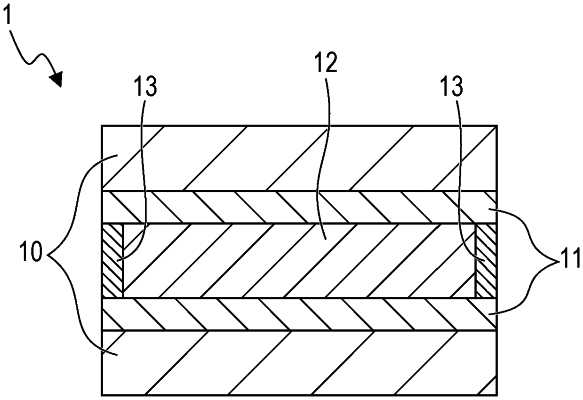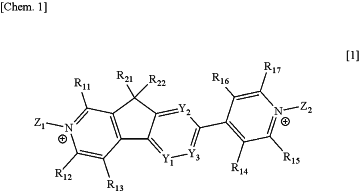| CPC G02F 1/1516 (2019.01) [C07D 401/10 (2013.01); C07D 471/04 (2013.01); C09K 9/02 (2013.01); E06B 3/6722 (2013.01); E06B 9/24 (2013.01); E06B 2009/2464 (2013.01); G02F 2203/01 (2013.01); G02F 2203/02 (2013.01); G02F 2203/055 (2013.01)] | 22 Claims |

|
1. An organic compound represented by a general formula [1] below:
 wherein, in the general formula [1], Z1 and Z2 are each independently selected from an alkyl group that may have a substituent, an aryl group that may have a substituent, and an aralkyl group that may have a substituent,
R11 to R17 are each independently selected from a hydrogen atom and a substituent; the substituent is any one of an alkyl group that may have a substituent, an alkoxy group that may have a substituent, an aryl group that may have a substituent, a heterocyclic group that may have a substituent, and a halogen atom; R16 and R17 may be linked together to form a ring,
R21 and R22 are each independently selected from a hydrogen atom and a substituent; the substituent is any one of an alkyl group that may have a substituent, an aryl group that may have a substituent, and an aralkyl group that may have a substituent, and
Y1 to Y3 are each independently selected from C—H, C—CH3, a N atom, and (N+-L)(X−) where L is any one of an alkyl group that may have a substituent, an aryl group that may have a substituent, and an aralkyl group that may have a substituent, and X− represents an anion.
|